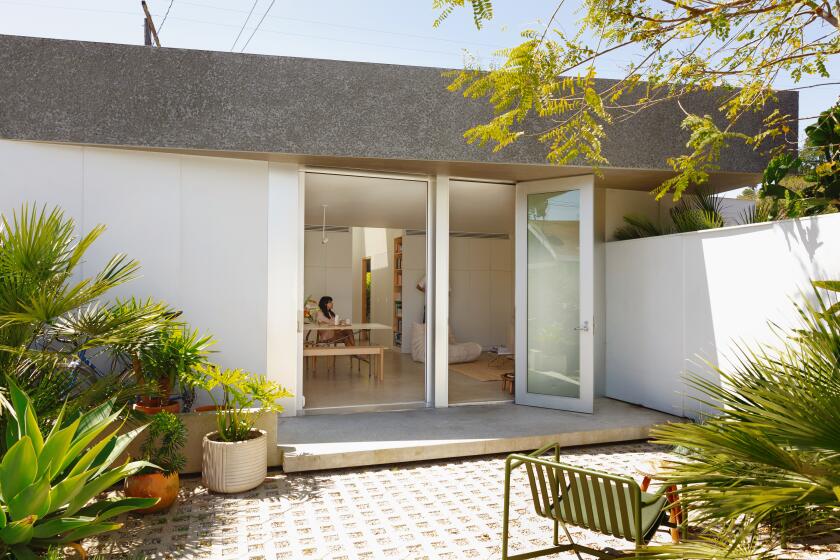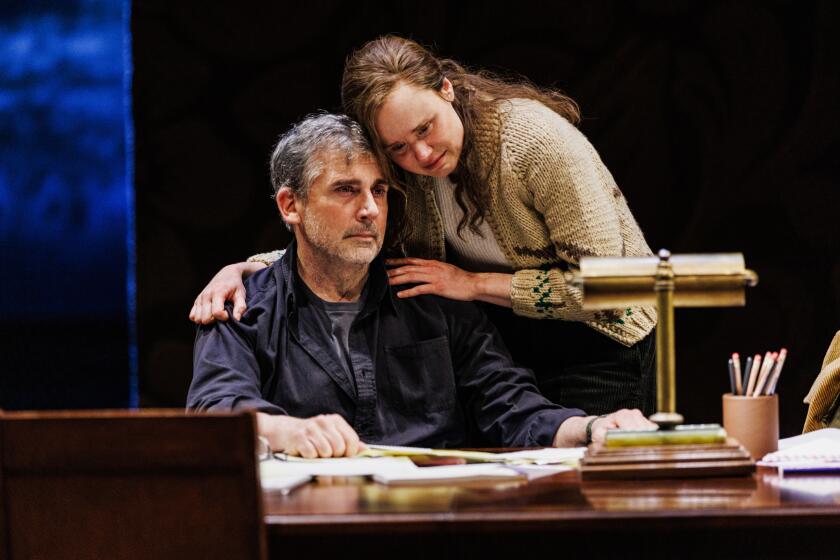Landmark Indecision
When it comes to architectural gems, diamonds should be forever. But that isn’t always the case in Southern California, where the past two years have seen the demolitions of a 1963 Richard Neutra home in Rancho Mirage, a 1924 Rudolph Schindler residence in Pasadena and a 1931 Schindler house in Avalon, on Catalina Island.
In Beverly Hills these days, preservationists have their fingers crossed for another unprotected treasure box, the fantastical old MCA complex (now North Crescent Plaza), at Little Santa Monica Boulevard and North Crescent Drive. The site’s fan base went on alert in September when the property was listed for sale or lease after telecommunications company Global Crossing filed for bankruptcy; company founder Gary Winnick was a principal in the partnership that owned the building. Mitchell Dawson says he headed to Beverly Hills City Hall to verify that no demolition permits were in the works. “I just wanted to make sure,” says the vice chairman of the Beverly Hills Planning Commission. Something about the 2 1/2-acre complex--with its porches, gabled roofs, antique iron gates, plaza courtyard, fountain, reflecting pool and columns--inspires fierce affection in architecture lovers. That group would include its creator, architect Paul Revere Williams, the first African American Fellow of the American Institute of Architects.
In the days before his death in 1980, Williams called the complex his favorite commercial project--no small praise from a brilliant stylist who designed, redesigned or partnered on thousands of Southern California buildings, including landmarks such as the Beverly Hills Hotel and Los Angeles International Airport’s atomic boomerang-style Theme Building (now the Encounter restaurant). “My grandfather used to say it [the MCA complex] was ‘a fine piece of work,’ ” says granddaughter Karen E. Hudson.
The project began in 1936 with a commission from moguls Lew Wasserman and Julius Stein at the Music Corporation of America. Williams gave MCA a home in the grand manner with a Colonial revival building done in a style dubbed “neo-Georgian.” To Christopher A. Pine, a senior planner for Beverly Hills, the work epitomizes Hollywood during the ‘30s. “Williams wanted to create a statement. It bears strong resemblance to studios in Culver City.” MCA acquired Universal Pictures in 1962, and the building was sold to Litton Industries, which added a second building during the early 1960s, also designed by Williams. “It looks like the whole was done at the same time,” says Hudson. “It was a stroke of genius. I think it was kind of fun for him.”
In 1998 Litton sold the property to the partnership of which Winnick was a principal. (Winnick also owned a Paul Williams-designed Bel-Air home, which he razed in 2000.) The curving front driveway of the MCA complex and its oval-shaped office have inspired some to call it “The White House.” “It’s my grandfather’s most classic example of using residential design in a commercial building,” says Hudson, who marvels that the building has had only three owners.
That situation is bound to change, and landmark lovers are fretting over the toothless quality of preservation in Beverly Hills. The city has a preservation ordinance, but the measure is ineffectual because Beverly Hills has never secured certification to act under California historic preservation laws (derived from National Park Service guidelines). “It’s never been applied in 27 years,” Pine says.
The alternative route of listing in the National Register of Historic Places offers a measure of protection, but must be initiated by a building’s owner or other person with knowledge of its historical significance, Pine says. “If the new owner wants to investigate and document it, it could be listed,” he says. “Who it was built for and built by, it’s like a bull’s-eye.” Hudson, who has authored two books on her grandfather, is holding her breath. “I would hope whoever bought the building bought it for what it was.”
More to Read
The biggest entertainment stories
Get our big stories about Hollywood, film, television, music, arts, culture and more right in your inbox as soon as they publish.
You may occasionally receive promotional content from the Los Angeles Times.






